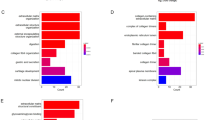Abstract
The aim of this paper was to identify novel proteins involved in the development of gastric cancer (GC). Isobaric tags for relative and absolute quantification (iTRAQ) analysis was adopted to separate the differentially expressed proteins between normal gastric epithelial cell line GES-1 and GC cell line SGC7901. Western blotting was utilized to validate the increased expression of sorcin in SGC7901; immunohistochemistry was performed to investigate its relationship with clinicopathological features of GC. Twelve differential proteins were identified. Seven proteins were found to be significantly upregulated (≥twofold), while five proteins were markedly downregulated (≤0.5-fold), in SGC7901 cells. Sorcin was detected by this proteomic approach with a 5.4-fold upregulation in SGC7901. Western blotting and immunohistochemistry confirmed the overexpression of sorcin in GC. Immunohistochemistry showed us that sorcin was overexpressed in 55 samples of GC tissue (55/85, 64.71%) and was related closely to the depth of invasion, TNM stage, and lymph node metastasis of GC (P < 0.05). The development of GC is regulated by multiple genes. Sorcin will be a novel molecular biomarker for the diagnosis, treatment, and prognosis of GC.



Similar content being viewed by others
References
Ohgaki H, Matsukura N. Stomach cancer. In: Stewart BW, Kleihues P, editors. World cancer report. Lyon: IARC Press; 2003. p. 197–207.
Roth AD. Curative treatment of gastric cancer: towards a multidisciplinary approach? Crit Rev Oncol Hematol. 2003;46:59–100.
Ellis DJ, Speirs C, Kingston RD, Brookes VS, Leonard J, Dykes PW. Carcinoembryonic antigen levels in advanced gastric carcinoma. Cancer (Phila.). 1978;42:623–5.
Sikoroska H, Shuster J, Gold P. Clinical application of carcinoembryonic antigen. Cancer Detect Prev. 1988;12:321–55.
Ritts R, Del Villano B, Go VL, Herberman RB, Klug TL, Zurawski VR Jr. Initial clinical evaluation of an immunoradiometric assay for CA19-9 using the NCI serum bank. Int J Cancer. 1984;33:339–45.
Hisamichi S. Screening for gastric cancer. World J Surg. 1989;13:31–7.
Zhang J, Sui J, Ching CB, Chen WN. Protein profile in neuroblastoma cells incubated with S- and R-enantiomers of ibuprofen by iTRAQ-coupled 2-D LC–MS/MS analysis: possible action of induced proteins on Alzheimer’s disease. Proteomics. 2008;8:1595–607.
Lu H, Yang Y, Allister EM, Wijesekara N, Wheeler MB. The identification of potential factors associated with the development of type 2 diabetes: a quantitative proteomics approach. Mol Cell Proteomics. 2008;7:1434–51.
Yokota T, et al. Identification of histological markers for malignant glioma by genome-wide expression analysis dynein a-PIX and sorcin. Acta Neuropathol. 2006;111:29–38.
Glen A, et al. iTRAQ-facilitated proteomic analysis of human prostate cancer cells identifies proteins associated with progression. J Proteome Res. 2008;7(3):897–907.
Keshamouni VG, et al. Differential protein expression profiling by iTRAQ- 2DLC-MS/MS of lung cancer cells undergoing epithelial-mesenchymal transition reveals a migratory/invasive phenotype. J Proteome Res. 2006;5:1143–54.
Armah HB, Parwani AV. Epithelioid sarcoma. Arch Pathol Lab Med. 2009;133(5):814–9.
Zheng LD, et al. Gastric carcinoma with osteoclast-like giant cells: a case report and review of the literature. J Zhejiang Univ Sci B. 2009;10(3):237–41.
Izdebska M, Grzanka A, Ostrowski M. The cytoskeleton reorganization and differentiation of HL-60 and K-562 human leukemia cell lines. Postepy Hig Med Dosw (Online). 2006;60:64–70.
Zhang X, Xu W. Aminopeptidase N (APN/CD13) as a target for anti-cancer agent design. Curr Med Chem. 2008;15(27):2850–65.
Badea L, Herlea V, Dima SO, Dumitrascu T, Popescu I. Combined gene expression analysis of whole-tissue and microdissected pancreatic ductal adenocarcinoma identifies genes specifically overexpressed in tumor epithelia. Hepatogastroenterology. 2008;55(88):2016–27.
Yan H, et al. IDH1 and IDH2 mutations in gliomas. N Engl J Med. 2009;360(8):765–73.
Perut F, et al. Immunogenic properties of renal cell carcinoma and the pathogenesis of osteolytic bone metastases. Int J Oncol. 2009;34(5):1387–93.
Kondo T, et al. ERM (ezrin/radixin/moesin)-based molecular mechanism of microvillar breakdown at an early stage of apoptosis. J Cell Biol. 1997;139(3):749–58.
Kannan K, et al. Lysosome-associated membrane proteins h-LAMP1 (CD107a) and h-LAMP2 (CD107b) are activation-dependent cell surface glycoproteins in human peripheral blood mononuclear cells which mediate cell adhesion to vascular endothelium. Cell Immunol. 1996;171(1):10–9.
Mizuuchi E, Semba S, Kodama Y, Yokozaki H. Down-modulation of keratin 8 phosphorylation levels by PRL-3 contributes to colorectal carcinoma progression. Int J Cancer. 2009;124(8):1802–10.
Kim TM, et al. Determination of genes related to gastrointestinal tract origin cancer cells using a cDNA microarray. Clin Cancer Res. 2005;11(1):79–86.
Kralovánszky J, Szentirmay Z, Besznyák I, Eckhardt S. Placental type alkaline phosphatase in possibly premalignant alterations of human gastric mucosa. Oncology. 1984;41(3):189–94.
Marian MB, et al. Association of sorcin with the cardiac ryanodine receptor. J Biol Chem. 1995;270(44):26411–8.
Nagpal JK, Das BR. Identification of differentially expressed genes in tobacco chewing-mediated oral cancer by differential display-polymerase chain reaction. Eur J Clin Invest. 2007;37(8):658–64.
Meyers MB, Biedler JL. Increased synthesis of a low molecular weight protein in vincristine-resistant cells. Biochem Biophys Res Commun. 1981;99:228–35.
Meyers MB. Sorcin: a calcium-binding protein overproduced in many multidrug-resistant cells. In: Smith VL, Dedman JR, editors. Stimulus response coupling: the role of intracellular calcium-binding proteins, Boca Raton: CRC Press Inc; 1990. p. 159–171.
Yang Y-X, Chen Z–C, Zhang G-Y, Yi H, Xiao Z-Q. A subcelluar proteomic investigation into vincristine-resistant gastric cancer cell line. J Cell Biochem. 2008;104:1010–21.
He QC, Zhang GY, Cao WJ. Correlation of sorcin overexpression to multidrug resistance of human gastric cancer cell line SGC7901. Ai Zheng. 2008;27(4):337–42.
Author information
Authors and Affiliations
Corresponding author
Rights and permissions
About this article
Cite this article
Deng, L., Su, T., Leng, A. et al. Upregulation of soluble resistance-related calcium-binding protein (sorcin) in gastric cancer. Med Oncol 27, 1102–1108 (2010). https://doi.org/10.1007/s12032-009-9342-5
Received:
Accepted:
Published:
Issue Date:
DOI: https://doi.org/10.1007/s12032-009-9342-5




